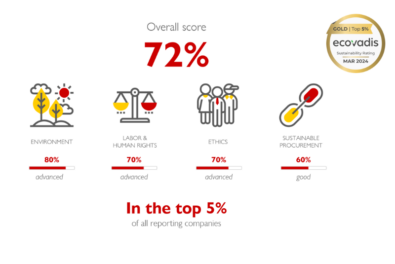BUSINESS PROCESS REVIEW (BPR), OR BUSINESS PROCESS AUTOMATION OR IS IT BUSINESS PROCESS MANAGEMENT?
Find out more from Michelle Kermath, Head of Consultancy & Technical – ECM.
Written by Michelle Kermath

Michelle is Head of Consultancy & Technical – ECM at Crown Records Management with years of experience in the field of Enterprise Content Management (ECM).
When discussing Business Process Automation, it can be confused with Business Process Management. Before you get to either of these at Crown Records Management, we advise you to go through a Business Process Review. A Business Process Review will confirm the type of process automation your business requires or establish the business process management that best suits your business.
Professionally trained consultants carry out BPRs and analyse a company/department/process from both top-down and bottom-up. Dictated by the need and objectives of the organisation, it will take a closer look at ‘People, Process & Technology’, allowing for a detailed process map and activity descriptions of the current state.
The findings then identify issues, risks, and gaps in process automation. This outcome report is studied to develop a future state solution highlighting costs vs benefits.
How does a BPR make life simpler for our clients?
Business Process Reviews are an essential step for any company who are starting to recognise the following:
- A process that seems to take forever or always encounters an issue.
- Need to recruit more people to undertake the same tasks.
- Need to work differently due to changes in remote and flexible working.
- The need to cut costs.
- To implement Business Process Management and Process Automation.
The people carrying out the work are the experts; their knowledge is critical to making changes. However, these people are also busy doing their day job and often only know their areas. The benefit of the BPR is the consultant will collate information across all departments and provide the following:
- One outcome report.
- Providing a 360-degree view of the business.
- Causing minor inconvenience to the daily running of the business.
The end-to-end information gained from a BPR makes life simpler by using the current state information to inform a future state solution and propose the steps and milestones to achieve the future state – setting clear and realistic expectations. The key players who would benefit would shape this future state solution.
For the organisation, the benefits of a more straightforward way of working following a BPR can be:
- Quicker process completion time with business process automation tools
- Achieving regulatory compliance
- Reduced risk
- Identifying wasted efforts and the ability to remove them without negative consequences
- Improving the quality of work output
- Increased performance and decreased issue handling
For the employee, the benefits can be:
- Employee satisfaction
- Increased productivity by reducing mundane tasks with process automation and automation solutions
- Increased customer satisfaction
- Flexible working
- Better collaboration and communication
Is it always technology and Business Process Automation tools that can simplify a process?
You will have the end-to-end process mapped so can easily see where a step may not be necessary. Before looking at process automation, the function is streamlined to ensure that the process automation is fit for purpose.
In the words of Bill Gates, “The first rule of any technology used in a business is that automation applied to an efficient operation will magnify the efficiency. The second is that automation applied to an inefficient operation will magnify the inefficiency“.
Therefore, adding process automation will create real value and increase performance and efficiency – once the business process automation tools have been reviewed to ensure they are fit for purpose.
That’s how a BPR helps too!
How can your role help to take away complexity and provide solutions?
This role is here to bring these strands together and provide a holistic report of the organisation’s current practices, how they are working at all levels, the bottlenecks and issues, gaps and risks, whilst also highlighting the good practices and ensuring these are retained in any new solution (this is important!).
The benefit of having a BPR completed by someone in this role is that they also bring the solutions expertise and understanding of what business process automation tools could be applied and how—giving a more detailed end-future state solution proposal.
Often organisations need to know they have a challenge or compliance issue; why is this?
Organisations are busy being successful and doing their day job. When growing, expanding and supporting their customers and hitting an issue, organisations are good at finding ways to get around them to ensure that they can carry on providing the service or product to their customers. Over time, this creates so many workaround processes that they become the norm, and it is challenging to unpick them.
It becomes more apparent when it hits performance, numbers, complaints, and compliance through reporting, but it still may not be obvious where in the process the issue is.
What impact has the pandemic had on clients managing information?
Organisations were in many different places when the pandemic hit. Some were still moving physical paper around and came to a halt – they had to continue sending people to access information, share, scan, and email, creating mini manual mailrooms.
Some thought they had ‘gone digital’ and had process automation as they received notification by email and saved it to shared folders; they soon realised their systems were not set up for sharing or collaborating on data. People have realised they need to get the correct data – not the paper – to the right people at the right time.
Why are businesses planning to speed up their Business Process Automation tools because of the impacts of COVID-19?
Again, organisations moved quickly to react to the pandemic, finding ways that worked for them to carry on doing business. No-one knew at how long these interim arrangements would be needed. Initially these were quick workarounds which eventually became the norm and now organisations want to review them and ensure they are fit for purpose now and in the future.
The pandemic stretched for longer and has directly and permanently impacted flexible and remote working arrangements. Organisations are looking to operate differently in the longer term, so they need business process automation tools and automation solutions.
Why do we see more and more organisations shifting towards managing information through Process Automation tools?
Organisations have gone through a journey – paper, scanning, emails, and file exchange. Now the emphasis is on data rather than documents and how they get that information in and shared through business process management.
Customers and end users transact via their phones/tablets, and there is an expectation from the customer now to do all of their business in this way, as it is easier and more convenient. Organisations that put customer demands at the centre of operational planning will look at how they change how they work to match that demand.









